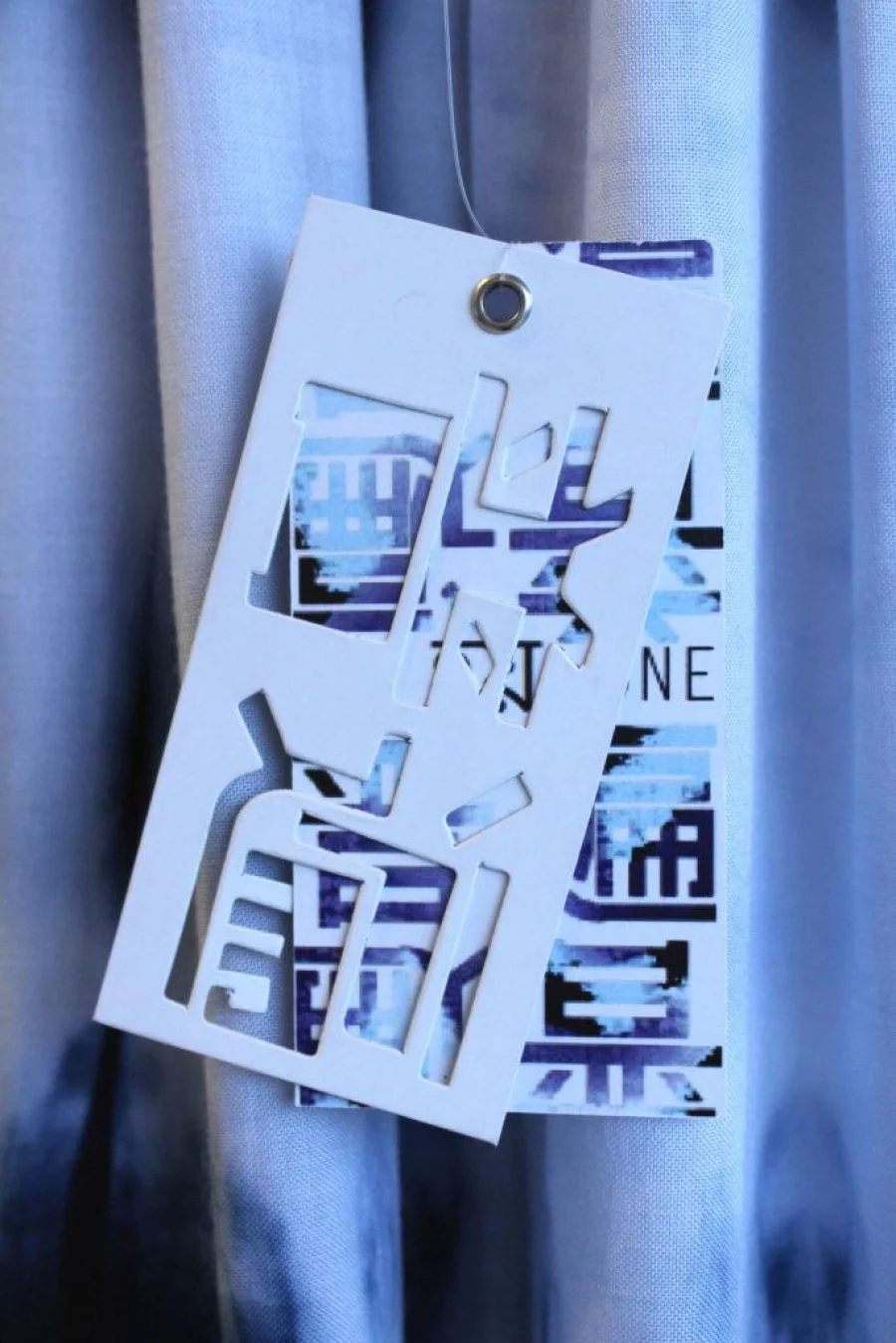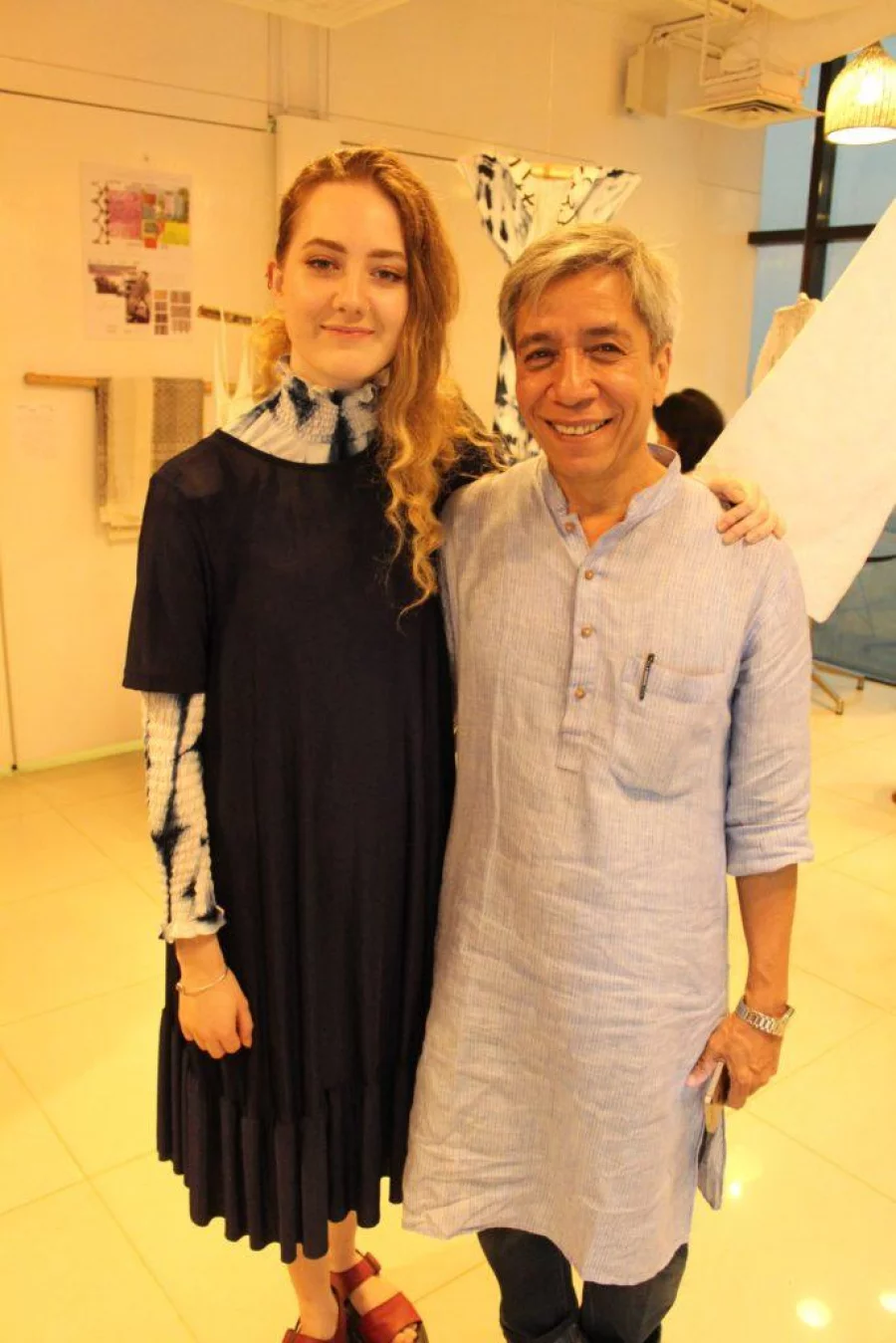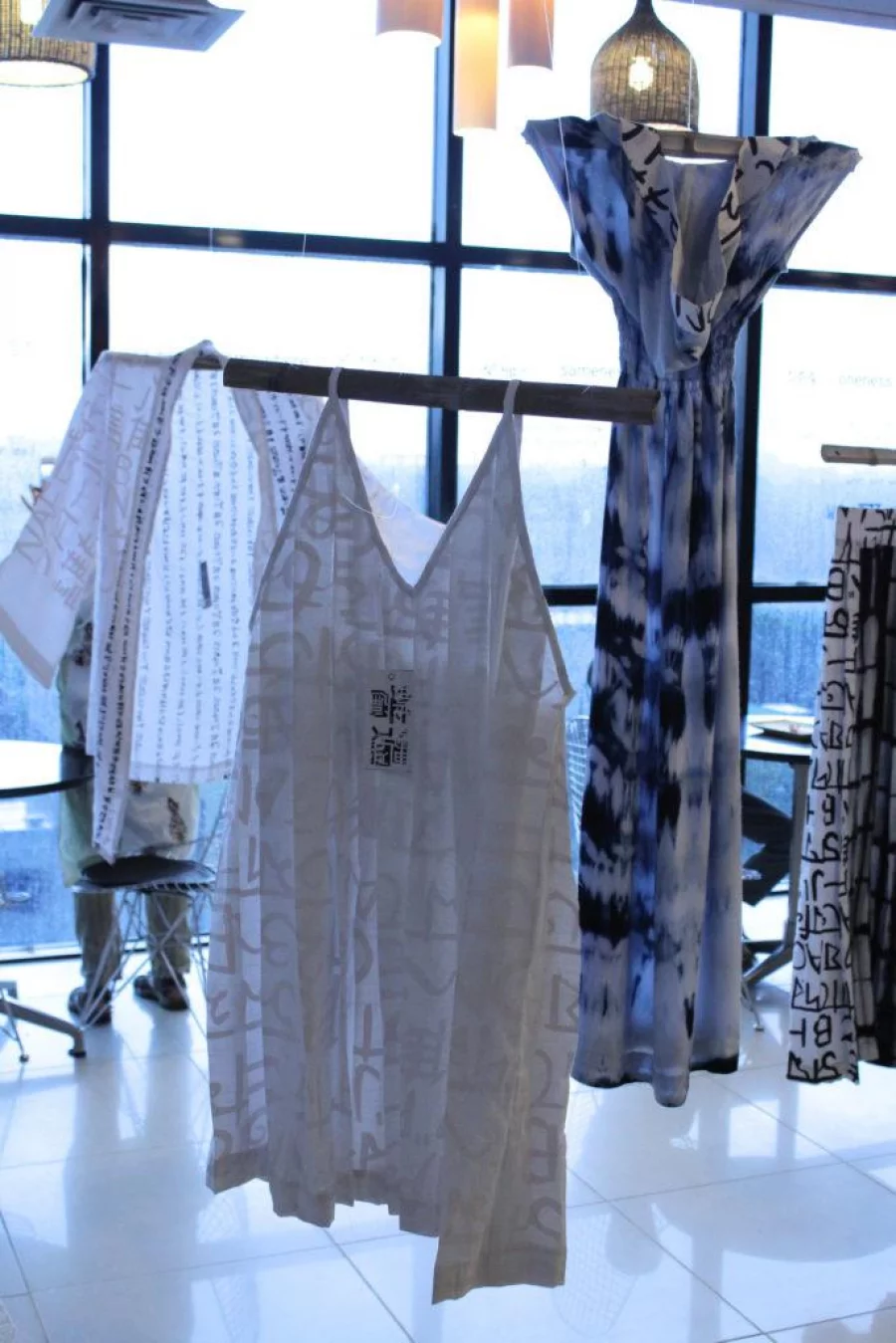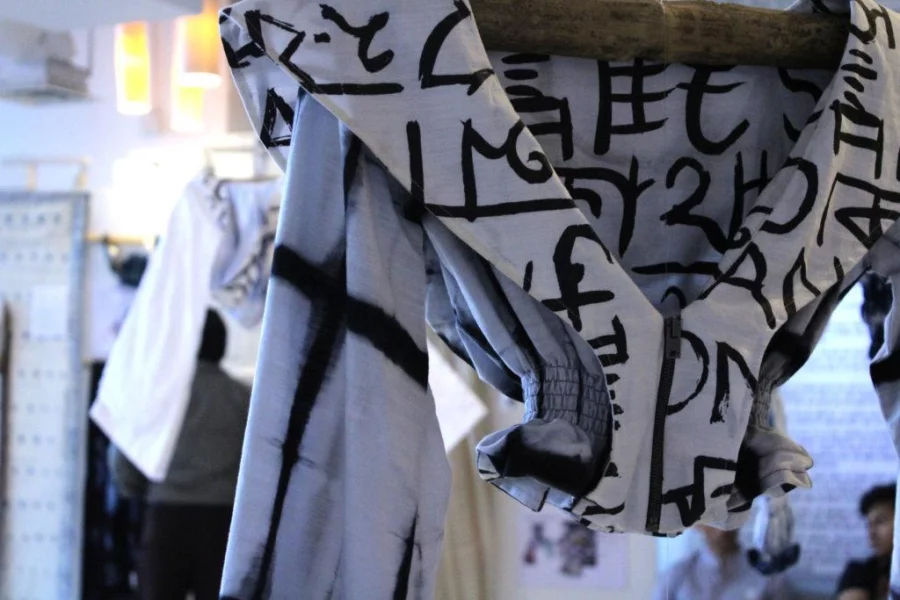Dawn Kelso was only ten years old when she came to Bangladesh with her mother and met Shahid Hussain Shamim, Founder Director of Prabartana. Back in 2008, his work left a strong impression on her.
“I remember crying all the way to the airport when we had to leave, and Mr Shamim telling me that when I was older, I should go to fashion college, and then work for him. 10 years on, that’s exactly what happened!”
Kelso will graduate next summer, and as a part of her work experience placement, she opted out of chasing big design houses. According to the young designer, “there was only one place I wanted to be; Bangladesh!”
The London College of Fashion senior just finished an exhibition showcasing a 59 day collaboration with Shamim. This week, we catch up with Kelso and about the exhibition “Universality: We are One” and what's next.

How did you get started?
I’ve always wanted to be a designer, but my career probably started at 14, when I interned for this up-and-coming Scottish fashion label as part of school work experience. What was meant to be a week turned into four of the best years of my life. We did everything ourselves, from designing prints to manufacturing and photo shoots. We were all really in love with the brand, so we had a lot of fun bringing it to life. There were days we would actually sleep at the studio! This was a big turning point in my journey - they taught me to work extremely hard but enjoy every step.
Tell us about a pet project.
In my first year, H&M approached LCF students to make a collection from clothes recycling bins. The winners would be displayed at the UK flagship stores of this high street giant that pours out more than 550 million garments a year. I found the idea that they were going to market themselves as sustainable, and use my clothes to do it, incredibly alarming. We were asked to choose a visionary whose values would inspire the nature of the collection, so I chose Ai Wei Wei, a Chinese protest artist. I decided to use only t-shirts to protest the treatment of garment workers by H&M, and denim as a symbol of the western world. I put messages into the garments: I drew the human rights act onto H&M labels and hid them amongst the thick textile, and stitched the number of people who have died in H&M garment factories into the lining. When I was chosen as one of the winners, I felt like Ai Wei Wei would have approved - here was one of the biggest brands in the world displaying to their customers what they try their hardest to hide.

Why “Universality: We are one”?
There are far too many clothes in the world, and I have often battled with an internal dilemma about how I can justify making even more. It is so easy to dress mindlessly, and we often forget that what we wear is a platform to make statements on what we believe in. Making clothes that have a political message is a solution to this dilemma, and was really key in this project. The concept came about very organically as a reaction to the current political climate of the world, and was also fed by my experience of moving from Brexit Britain to Bangladesh.
Although I was immersed in a completely different culture, my growing friendships with Bangladeshi people made me notice how many more similarities we held than differences. however, politically, these similarities are ignored, differences are becoming ever more defining, and the media is using them as a means of demonisation. I wanted to make clothes that people can wear proudly as a statement against this. I can’t speak Bangla, and some of the people I was spending time with could barely speak
English - so I had some instances of communicating with drawings and sign language. But even still, we understood each other, not just in terms of communication but also on a human level.
This lead me to thinking of language as a kind of invisible wall between people, and I imagined a future where we communicate through an amalgamation of languages that everyone can understand, which I think would make it more difficult to see people from different countries as ‘other’. The phrase ‘we are one’ came about from experimenting with words from Japanese, Bangla and Scottish Gaelic languages, but I felt that it explains the nature of the project and is a powerful statement.

What similarities did you find in these different cultures?
Shahid Hussain Shamim is extremely passionate about traditional textiles, which led me to investigating the link between textiles and culture. Obviously, textiles are a big part of Bangladeshi heritage, but I was interested in finding out ways in which they are intertwined with my own culture. I found that in Scotland, there are harris tweed weaving communities that are very similar to the jamdani villages I visited in Bangladesh, where everything about the lifestyle is centred around the production of exquisite fabric. There are also a lot of similarities between traditional jamdani motifs and the ones found in fair isle knitting patterns, which originated from a tiny island of 100 people at the most northern point of Scotland. I was really excited about this similarity, so I designed a screen print that combines both motifs, which we applied to sarees.

What did you find to be most intriguing?
I found it fascinating how much communication is integral to life in Dhaka. People need to interact to navigate roads, or haggle at a market. This is a stark contrast to London, where the technological influence and organisation of the city has made it unnecessary for people to have conversations, or even make eye contact. Then, I started thinking about Japan, where ambiguity is appreciated and respected in communication. Being from Scotland, where speech is more often than not quite brash and upfront, I found this very interesting and quite unusual. I wanted to work it into the print I designed, where a combination of words from the three languages makes it almost understandable, but not quite.

Tell us about the cuts and patterns you’ve applied.
I looked to traditional/national dresses to inspire the silhouettes in the collection. I thought it was interesting to reference them as stereotypes, because how someone dresses is a major way in which we first make decisions about how they are similar or different to us. I took subtle elements from Scottish kilts, Bangladeshi sarees and Japanese kimonos and samurai warrior outfits, and combined them into clothes that I think are wearable for people of all ages, races or religions. The aim was to create variety so that if you are a person that stands for the message of ‘universality: we are one’, there will be something in the collection that you could see yourself wearing.

How do you think this will help you in future endeavours?
This project has inspired me more than anything else I’ve ever worked on. Combining an important message about humanity with a business that is dedicated to community and environmental sustainability has been a bit of a dream come true. It has given me a vision for what I want to do when I leave university, and fuelled my belief in a fair trade/sustainable fashion future. It was hard to leave Bangladesh, but I am really looking forward to coming back to pick up from where we left off, and take this project somewhere really exciting.







